Essential First-Aid Tips for Emergency Preparedness
In today's fast-paced world, being prepared for emergencies is not just a good idea; it's a necessity. Imagine you're out and about, enjoying a sunny day, and suddenly someone nearby collapses. What would you do? This is where knowing essential first-aid tips comes into play. First aid is the initial assistance given to someone who is injured or ill, and having this knowledge can make a significant difference in critical situations. It’s like having a safety net that you can rely on when the unexpected happens. This article covers crucial first-aid tips that everyone should know to be prepared for emergencies, aiming to equip you with the knowledge and skills necessary to respond effectively when it really matters.
Grasping the fundamental principles of first aid is vital. Think of first aid as the foundation of emergency response; without it, your ability to help others can crumble like a house of cards. The first step in any emergency is to assess the situation. This means taking a moment to evaluate what has happened, checking for any dangers to yourself or the victim, and determining whether you need to call for professional help. Once you’ve ensured that it’s safe to proceed, prioritize care based on urgency. For example, if someone is bleeding heavily, that takes precedence over a sprained ankle. Remember, keeping a cool head and knowing what to do can be the difference between life and death.
Knowing what supplies to have on hand can make a significant difference in an emergency. Imagine you’re in a situation where someone needs immediate help, and you realize you don’t have the right tools at your disposal. It’s like trying to fix a car with no tools! To avoid this, it’s essential to have a well-stocked first-aid kit. Here’s a quick list of essential items every first-aid kit should contain:
- Adhesive bandages in various sizes
- Antiseptic wipes or solution
- Gauze pads and tape
- Scissors and tweezers
- Disposable gloves
- Pain relievers like ibuprofen or acetaminophen
- CPR face shield or mask
- Emergency blanket
Having these items can ensure you're prepared for various situations, whether it’s a minor scrape or a more serious injury.
Building a comprehensive first-aid kit tailored to your needs is essential. It’s like crafting a personalized toolbox for emergencies! Start by selecting the right items based on your lifestyle. For instance, if you have children, you might want to include additional supplies like pediatric medications or burn ointment. Organizing these items for quick access during emergencies is equally important. Consider using clear plastic bags or containers to categorize supplies, so you can find what you need without fumbling around in a panic.
Your home first-aid kit should include specific items to address common injuries. Think of it as your family's safety vault! Here are some recommended supplies:
- Thermometer
- Instant cold packs
- Burn cream
- Hydrocortisone cream for rashes
- Eye wash solution
These items will ensure your family is safe and ready for any minor medical issues that may arise.
Traveling requires a different set of first-aid supplies. Whether you're hiking in the mountains or lounging on a beach, having the right supplies can save the day. Essential items to include in your travel kit might consist of:
- Motion sickness tablets
- Sunburn relief
- Insect bite relief cream
- Antihistamines for allergic reactions
Being prepared while away from home can help you enjoy your adventures without worrying about unexpected mishaps.
Understanding basic first-aid techniques is crucial for effective response. It’s one thing to have supplies, but knowing how to use them is where the real magic happens. Essential skills include CPR, wound care, and how to manage choking incidents. For example, performing CPR can double a victim’s chance of survival in a cardiac emergency. Similarly, knowing how to clean and dress a wound can prevent infections and promote healing. It’s like being a superhero in a moment of crisis!
Recognizing the signs of common medical emergencies can save lives. It’s like having a sixth sense that alerts you to danger. Some of the most critical emergencies include heart attacks, strokes, and allergic reactions. Here’s a quick overview:
| Emergency | Symptoms |
|---|---|
| Heart Attack | Chest pain, shortness of breath, nausea |
| Stroke | Sudden numbness, confusion, trouble speaking |
| Allergic Reaction | Itching, swelling, difficulty breathing |
Being able to identify these symptoms quickly can lead to faster treatment and potentially save a life.
Cardiac arrest is a life-threatening situation requiring immediate action. When faced with this, your first move should be to call for help. Dial emergency services and provide them with clear information. While waiting for professional assistance, performing CPR can be life-saving. Push hard and fast in the center of the chest, at a rate of 100-120 compressions per minute. It’s like a rhythm that can keep someone's heart beating until help arrives.
Allergic reactions can escalate quickly and require prompt intervention. If you notice symptoms like swelling or difficulty breathing, it’s crucial to act fast. Identify whether the person has an EpiPen and administer it if necessary. This simple action can reverse severe reactions and buy time until medical help arrives. Think of it as a quick fix that can turn a scary situation into a manageable one.
Knowing when to seek professional medical assistance is essential for effective emergency care. If the situation feels beyond your control, don’t hesitate to call for help. Signs that require immediate medical attention include severe bleeding, unconsciousness, or difficulty breathing. It’s better to err on the side of caution than to regret inaction later. Remember, you’re not alone; help is just a phone call away!
Q: What should I include in my first-aid kit?
A: Essential items include adhesive bandages, antiseptic wipes, gauze pads, scissors, and pain relievers.
Q: How do I know when to perform CPR?
A: If someone is unresponsive and not breathing, it's time to start CPR.
Q: Can I treat allergic reactions at home?
A: Minor allergic reactions can be treated with antihistamines, but severe reactions require immediate medical attention.
Q: How often should I check my first-aid kit?
A: It's a good idea to check your kit every six months to replace expired items and ensure everything is stocked.
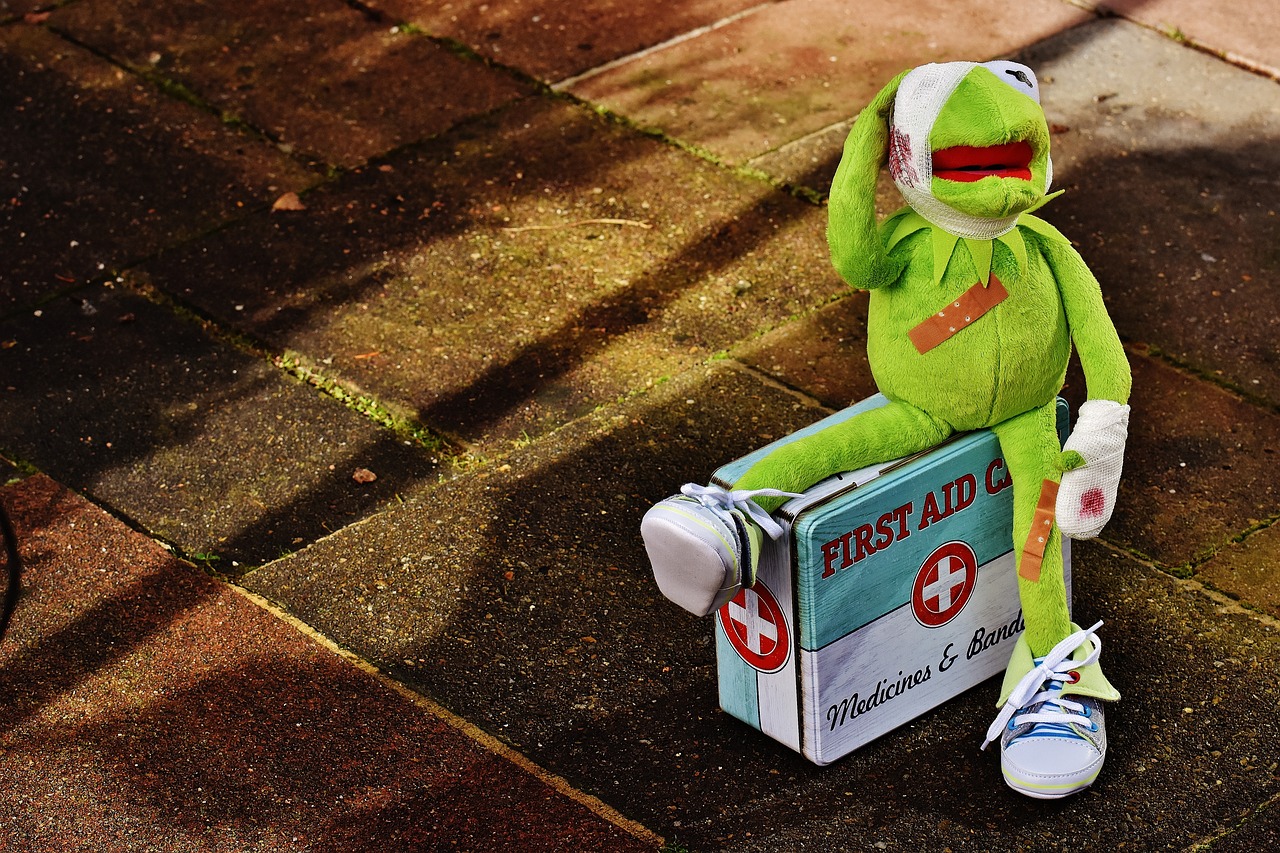
Understanding Basic First-Aid Principles
Grasping the fundamental principles of first aid is essential for anyone looking to be prepared for emergencies. Imagine you're in a situation where someone is injured, and every second counts. The ability to assess the situation calmly and prioritize care based on urgency can make all the difference. First aid is not just about treating injuries; it's about being a lifesaver when it matters most.
First, you need to assess the scene. Is it safe for you to approach? Look for any potential dangers, such as traffic, fire, or electrical hazards. Once you determine it's safe, check the victim's responsiveness. A simple shout or gentle shake can help you gauge their condition. If they're unresponsive, it's time to call for professional help immediately.
Next up is the ABC approach to first aid, which stands for Airway, Breathing, and Circulation. This method is crucial when dealing with unconscious individuals. Start by ensuring their airway is clear. If they’re not breathing, you’ll need to perform CPR. Understanding how to maintain circulation through chest compressions can literally save a life. It’s like being the heart of the operation until medical professionals arrive.
Another vital principle is to control the situation. This involves remaining calm and composed while providing care. Panic can spread like wildfire, making it harder for you to think clearly. By staying focused, you can effectively manage the care needed. Always remember to communicate with the victim if they're conscious. Reassuring them can help alleviate anxiety and keep them stable until help arrives.
Also, knowing the scope of your training is crucial. You don’t want to attempt advanced techniques if you’re not trained in them. Stick to what you know and perform those actions to the best of your ability. If you’re unsure about something, it’s always better to wait for professionals than to risk causing further harm.
In summary, understanding these basic principles of first aid can empower you to act decisively in emergencies. By assessing the scene, applying the ABC approach, controlling the situation, and recognizing your limits, you position yourself as an effective responder. Always keep in mind that your actions can make a world of difference in someone else's life.
For a quick reference, here’s a simple table summarizing the key principles:
| Principle | Description |
|---|---|
| Assess the Scene | Ensure safety before approaching the victim. |
| ABC Approach | Check Airway, Breathing, and Circulation. |
| Control the Situation | Stay calm and reassure the victim. |
| Know Your Limits | Only perform actions you are trained to do. |
By integrating these principles into your understanding of first aid, you will not only be prepared but also confident in your ability to help others in critical moments. Remember, the goal is to stabilize the situation until professional help arrives, and every action counts!

Essential First-Aid Supplies
When it comes to emergencies, having the right first-aid supplies at your fingertips can make all the difference between a minor mishap and a major crisis. Imagine being in a situation where someone has a cut that needs immediate attention, but you find yourself scrambling through drawers, looking for a bandage. It's not just about having a first-aid kit; it's about having the essential items that can help you respond effectively. So, let's dive into what you really need to stock up on.
First off, every first-aid kit should include basic supplies that can address a variety of common injuries. These items are the building blocks of any first-aid kit. You might think of them as the foundation of your emergency preparedness. Here’s a quick rundown of essential supplies that should be in your kit:
- Adhesive Bandages: For those minor cuts and scrapes.
- Gauze Pads: To cover larger wounds and control bleeding.
- Antiseptic Wipes: To clean wounds and prevent infections.
- Medical Tape: To secure gauze and dressings.
- Scissors: For cutting tape, gauze, or clothing.
- Tweezers: To remove splinters or debris.
- Instant Cold Packs: To reduce swelling and relieve pain.
- Pain Relievers: Such as ibuprofen or acetaminophen.
- Burn Cream: To soothe minor burns.
- First-Aid Manual: For guidance during emergencies.
Now, while these items are crucial, it’s equally important to tailor your first-aid kit to your specific needs. For example, if you have a family member with allergies, including an EpiPen could be life-saving. If you have kids, you might want to add some fun band-aids to make them feel better during a minor scrape. Think of your first-aid kit as a personalized toolbox for health emergencies.
In addition to these basic supplies, consider the environment where you'll be using your first-aid kit. Are you often outdoors? Then you might want to add items like insect repellent, sunscreen, or a snake bite kit. If you travel frequently, your kit should include medications you might need, like antihistamines or any prescription drugs. Your first-aid kit should be as dynamic as your lifestyle!
To make sure you're always prepared, check your first-aid kit regularly. Items can expire, and you might find that you've used some supplies without replacing them. Set a reminder to review your kit every six months, ensuring that everything is stocked and up-to-date. This simple step can save you a lot of hassle during an emergency.
In summary, having the right first-aid supplies is like having a safety net. It gives you the confidence to handle minor emergencies effectively, ensuring that you and your loved ones are safe. So, take the time to assemble a comprehensive first-aid kit that meets your needs, and remember to keep it accessible. You never know when you might need it!
Q: How often should I check my first-aid kit?
A: It's a good practice to check your first-aid kit every six months to ensure that supplies are stocked and not expired.
Q: Can I use my first-aid kit for pets?
A: Yes, but make sure to include pet-specific items such as bandages, antiseptic wipes, and any medications your pet may need.
Q: What should I do if I don't know how to use a first-aid item?
A: Consult a first-aid manual or take a first-aid course to familiarize yourself with the proper techniques for using the supplies in your kit.
Q: Where should I keep my first-aid kit?
A: Store your first-aid kit in a cool, dry place that is easily accessible to all family members, such as a kitchen cabinet or a designated drawer.

Creating Your First-Aid Kit
Building a comprehensive first-aid kit is not just a good idea; it’s a necessity for anyone who wants to be prepared for emergencies. Imagine being in a situation where someone gets injured, and you’re left scrambling for supplies. It's like trying to find a needle in a haystack! So, let’s make sure that doesn’t happen by creating a well-organized kit that meets your needs.
First things first, you need to consider the specific needs of your household. Are there children, elderly family members, or pets? Each of these groups may require different supplies. For instance, if you have kids, you might want to include items like adhesive bandages with fun designs to make it less scary for them. Remember, a first-aid kit is not just a box of random stuff; it should be tailored to your unique circumstances.
Next, let's talk about organization. A first-aid kit that’s a jumble of supplies is about as useful as a chocolate teapot! Organize your kit into categories. You might have a section for wound care, another for medications, and a third for emergency tools. This way, when the pressure is on, you can grab what you need without wasting precious time. You can use small, clear plastic bags or containers to separate these categories, making it easy to see what you have at a glance.
Here’s a quick breakdown of what you might want to include in your kit:
- Wound Care: Adhesive bandages, sterile gauze pads, adhesive tape, antiseptic wipes, and antibiotic ointment.
- Medications: Pain relievers, antihistamines, and any personal medications that family members may need.
- Emergency Tools: Scissors, tweezers, a digital thermometer, and gloves.
Additionally, consider including a first-aid manual or guide. It’s not just about having the supplies; knowing how to use them is equally important. Think of it as having a map on a road trip; you wouldn’t want to get lost without directions!
Finally, don’t forget to regularly check your kit. Supplies can expire, and you might find that some items are used up over time. Set a reminder on your calendar to review the contents every six months. This way, you can rest easy knowing you’re ready for whatever life throws your way.
In summary, creating your first-aid kit is an essential step towards ensuring safety and preparedness. By tailoring it to your specific needs, organizing it effectively, and keeping it updated, you’ll be well-equipped to handle emergencies with confidence. And remember, being prepared is not just about having the right supplies; it’s about having the peace of mind that comes with knowing you’re ready to help yourself and others in times of need.
1. How often should I check my first-aid kit?
It’s a good practice to check your first-aid kit every six months to ensure all supplies are up-to-date and fully stocked.
2. Can I use my first-aid kit for pets?
While some items can be used for pets, it's best to have a separate kit specifically designed for animal care. Consult your veterinarian for recommendations.
3. What should I do if I run out of supplies?
Make a list of what you need to replace and restock your kit as soon as possible. Don’t wait until an emergency arises!
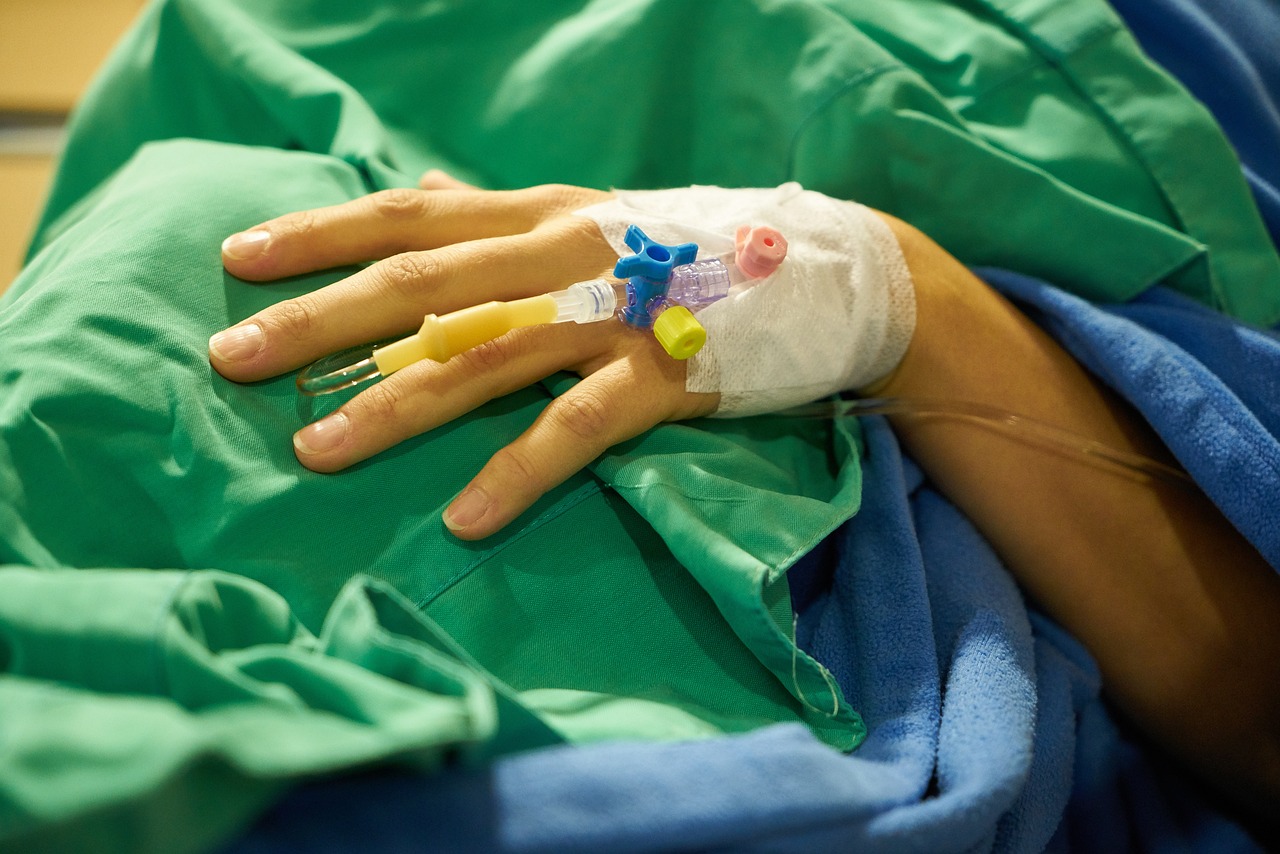
Recommended Items for Home Kits
When it comes to ensuring the safety and well-being of your family, having a well-stocked first-aid kit at home is absolutely vital. You never know when an emergency might strike, and being prepared can make all the difference. A good first-aid kit should be tailored to your specific needs, but there are some essential items that every home kit should include. Think of it as your family's safety toolbox, ready to tackle minor injuries and emergencies.
First and foremost, you should consider including a variety of bandages and dressings. These are crucial for treating cuts and scrapes, and they come in different sizes to accommodate various injuries. A selection of adhesive bandages, sterile gauze pads, and elastic bandages will ensure you can handle anything from a small cut to a sprained ankle. Don't forget to add some medical tape to secure the dressings in place!
Another key component of your home first-aid kit is antiseptic wipes and ointments. Keeping the wound clean is essential to prevent infections. Antiseptic wipes are great for cleaning the area around a wound, while antibiotic ointment can be applied afterward to promote healing. Consider also including a bottle of hydrogen peroxide or alcohol wipes for extra cleaning power.
In addition to these basic supplies, having a thermometer on hand is important for monitoring fevers, especially in children. A digital thermometer is quick and easy to use, providing accurate readings in seconds. Furthermore, include a pair of scissors and tweezers in your kit. Scissors can be used to cut tape, gauze, or clothing in case of an emergency, while tweezers are perfect for removing splinters or ticks.
Don't forget to include some over-the-counter medications as well. Pain relievers like ibuprofen or acetaminophen can help alleviate discomfort from minor injuries or headaches. Additionally, having antihistamines for allergic reactions and a few doses of aspirin can be lifesaving, especially for heart-related emergencies.
Lastly, it’s a good idea to keep a first-aid manual in your kit. This can serve as a quick reference guide during an emergency, helping you remember the steps to take for various situations. You might also want to consider adding a pair of disposable gloves to protect yourself and the injured person from infections.
For your convenience, here’s a quick table summarizing the recommended items for a home first-aid kit:
| Item | Purpose |
|---|---|
| Adhesive Bandages | For covering small cuts and abrasions |
| Sterile Gauze Pads | For larger wounds |
| Antiseptic Wipes | To clean wounds |
| Thermometer | To check for fever |
| Pain Relievers | To alleviate discomfort |
| First-Aid Manual | For reference during emergencies |
By stocking your home first-aid kit with these essential items, you’ll be taking a significant step toward ensuring your family's safety. Remember, it’s not just about having the supplies; it’s about knowing how to use them effectively. So, take the time to familiarize yourself with the contents of your kit and practice basic first-aid techniques. Your preparedness could make all the difference in an emergency situation.

First-Aid Supplies for Travel
When you're on the go, whether it's a weekend getaway or a long backpacking adventure, having the right first-aid supplies can make all the difference. Imagine you're hiking in the mountains, and suddenly you twist your ankle or get a nasty scrape. Without proper supplies, a minor injury can turn into a major headache. So, what should you pack in your travel first-aid kit to ensure you're ready for anything? Let's dive in!
First and foremost, your travel first-aid kit should be compact yet comprehensive. You want to have essential items that address common issues without lugging around a massive bag. Here’s a quick rundown of must-have items:
- Adhesive Bandages: Perfect for covering small cuts and blisters.
- Antiseptic Wipes: To clean wounds and prevent infections.
- Gauze Pads and Tape: Essential for larger injuries that require more coverage.
- Pain Relievers: Pack some ibuprofen or acetaminophen for headaches or muscle aches.
- Allergy Medication: If you have known allergies, don’t forget your antihistamines!
- Burn Cream: In case you accidentally get too close to the campfire.
- Scissors and Tweezers: For cutting tape or removing splinters.
But wait, there's more! Depending on your destination, you might need to tailor your kit further. For instance, if you're traveling to a tropical area, consider adding insect repellent and anti-itch cream to combat bug bites. If you're heading to a remote location, you might want to include a tourniquet and a space blanket for emergencies.
Another essential aspect of your travel first-aid kit is organization. Use a waterproof bag or a dedicated first-aid pouch to keep everything in one place. Label the items clearly, so you can quickly find what you need in a pinch. You don't want to be fumbling around when time is of the essence!
Lastly, always remember to check your kit before you leave. Ensure that all medications are within their expiration dates and replace any items you've used since your last trip. Keeping your travel first-aid kit updated is just as crucial as having one in the first place.
In summary, being prepared with the right first-aid supplies for travel can help you handle minor emergencies effectively, allowing you to focus on enjoying your adventures rather than worrying about what could go wrong. So, pack wisely and travel safely!
Q: What are the most important items to include in a travel first-aid kit?
A: Essential items include adhesive bandages, antiseptic wipes, gauze pads, pain relievers, and allergy medication. Tailor your kit based on your destination and activities.
Q: How can I ensure my first-aid kit is organized?
A: Use a waterproof bag or a dedicated pouch, label items clearly, and regularly check and update your kit before traveling.
Q: Should I include prescription medications in my travel kit?
A: Yes, if you take prescription medications, always carry an adequate supply along with a copy of your prescriptions.
Q: Are there specific first-aid supplies needed for children?
A: Yes, consider including pediatric medications, child-sized bandages, and any specific items your child may need based on their health conditions.
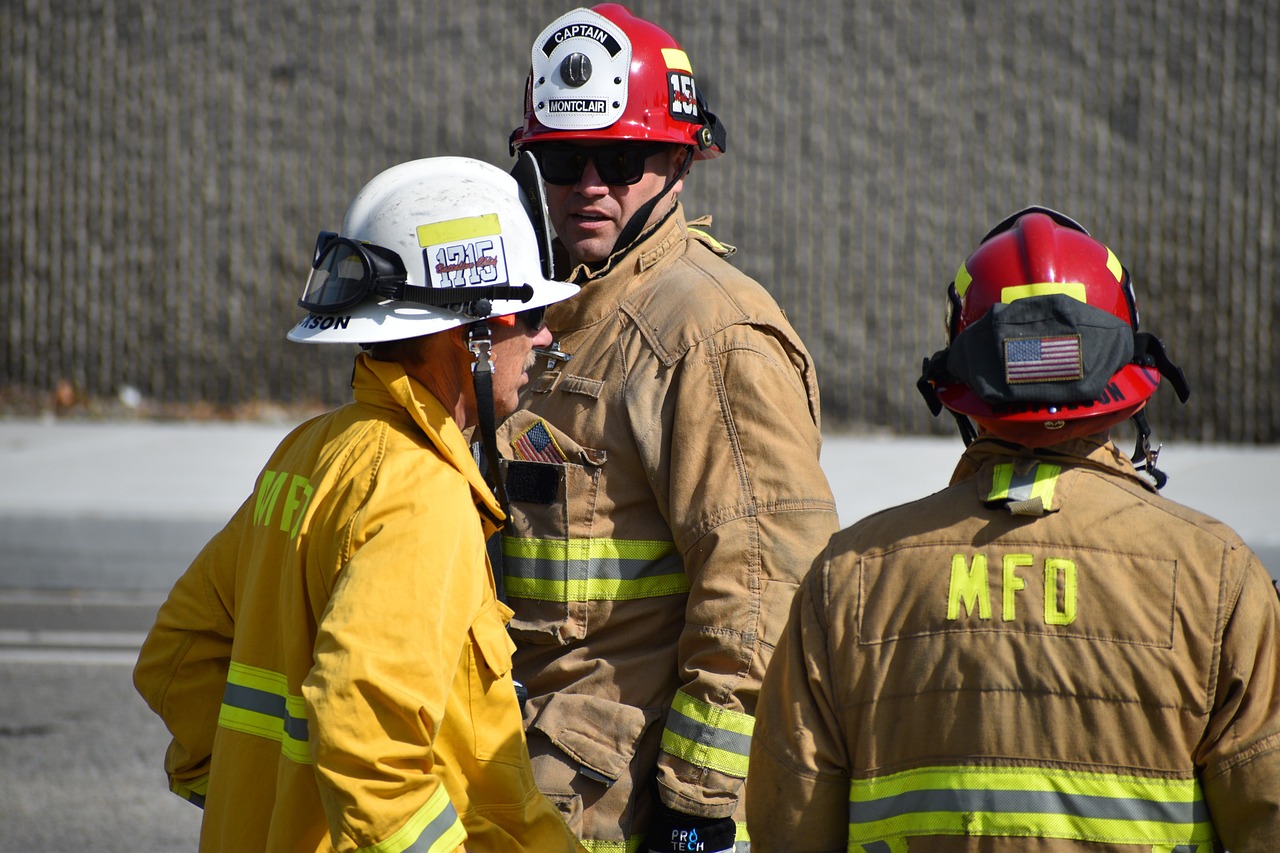
Basic First-Aid Techniques
When it comes to emergencies, knowing can be the difference between life and death. Think of first aid as your superhero toolkit; it equips you to handle unexpected situations with confidence and skill. Whether it’s a minor cut or a more serious incident like cardiac arrest, understanding these techniques can empower you to act quickly and effectively. So, let’s dive into some of the essential skills every person should master.
First and foremost, Cardiopulmonary Resuscitation (CPR) is one of the most crucial techniques you can learn. Imagine you’re at a family gathering, and suddenly someone collapses. Panic sets in, but if you know CPR, you can jump into action. CPR helps maintain blood flow to the brain and other vital organs until professional help arrives. It involves a series of chest compressions and rescue breaths. The American Heart Association recommends the following steps:
- Call 911: Always ensure that emergency services are on their way.
- Check for responsiveness: Tap the person and shout to see if they respond.
- Begin chest compressions: Place your hands in the center of the chest and push hard and fast at a rate of 100 to 120 compressions per minute.
- Give rescue breaths: If trained, give two breaths after every 30 compressions.
Next, let’s talk about wound care. Whether it’s a scraped knee or a deep cut, knowing how to treat wounds properly can prevent infection and promote healing. Start by washing your hands to minimize the risk of introducing bacteria. Clean the wound gently with soap and water, and apply an antibiotic ointment. Cover it with a sterile bandage to keep it protected. Remember, keeping the wound clean is key!
Another essential skill is managing choking incidents. Picture this: you’re out to dinner with friends, and one of them starts to cough and then goes silent. This could be a sign of choking. The Heimlich maneuver can save lives in such situations. Here’s how to perform it:
- Stand behind the person and wrap your arms around their waist.
- Make a fist with one hand and place it just above their navel.
- Grab your fist with the other hand and thrust inward and upward until the object is expelled or the person can breathe again.
Understanding how to use an automated external defibrillator (AED) is also vital. These devices can restore a normal heart rhythm during a cardiac arrest. They are often found in public places, and using one is straightforward. Just turn it on, follow the voice prompts, and apply the pads to the person’s bare chest. The AED will analyze the heart rhythm and advise whether a shock is needed.
In summary, mastering these basic first-aid techniques—CPR, wound care, choking management, and using an AED—can prepare you for a variety of emergencies. Remember, practice makes perfect! Consider taking a first-aid and CPR course to refine your skills. The more you practice, the more instinctive these actions will become when it truly matters.
Q1: How often should I refresh my first-aid skills?
A1: It's recommended to refresh your skills every two years, especially for CPR and AED training, as techniques and guidelines can change.
Q2: What should I do if I’m unsure about a first-aid technique?
A2: If you're uncertain, it's always best to call emergency services. They can guide you over the phone while you wait for help.
Q3: Can I perform first aid on myself?
A3: Yes, you can perform first aid on yourself for minor injuries. However, for serious conditions, seek help from others or call for emergency services.

Recognizing Common Medical Emergencies
In today's fast-paced world, being able to recognize common medical emergencies is crucial. Imagine you're at a family gathering, and suddenly someone clutches their chest, gasping for breath. Would you know what to do? Understanding the signs and symptoms of various emergencies can not only save lives but also provide peace of mind in stressful situations.
There are several medical emergencies that everyone should be aware of. Let's dive into some of the most common ones, including heart attacks, strokes, and allergic reactions. Recognizing these conditions early can make all the difference. For instance, a heart attack often presents with symptoms like chest pain, shortness of breath, and discomfort in the arms or jaw. If you notice someone exhibiting these signs, time is of the essence. You should call for emergency help immediately and be prepared to perform CPR if necessary.
Strokes, on the other hand, can be identified using the FAST method: Face drooping, Arm weakness, Speech difficulties, and Time to call emergency services. If a person displays any of these symptoms, acting quickly can minimize brain damage and improve recovery outcomes. Similarly, allergic reactions can escalate rapidly, with symptoms ranging from hives and swelling to difficulty breathing. If you suspect someone is having a severe allergic reaction, administering an EpiPen can be life-saving.
To help you remember these critical signs, here’s a quick reference table:
| Emergency Type | Key Symptoms | Immediate Action |
|---|---|---|
| Heart Attack | Chest pain, shortness of breath, discomfort in arms/jaw | Call 911, perform CPR if unresponsive |
| Stroke | Face drooping, arm weakness, speech difficulties | Call 911, note the time symptoms began |
| Allergic Reaction | Hives, swelling, difficulty breathing | Administer EpiPen, call 911 |
In addition to these emergencies, being aware of other situations, like severe bleeding or burns, is essential. The ability to identify these issues can help you provide necessary first aid until professional help arrives. Remember, staying calm and collected during these emergencies is vital. Your response can significantly impact the outcome for the person in distress.
In essence, recognizing medical emergencies involves being observant and informed. The next time you find yourself in a situation where someone is unwell, don’t hesitate to act. Your awareness and quick response could make all the difference in a critical moment.
Q: What should I do if I suspect someone is having a heart attack?
A: Call 911 immediately. If the person is unresponsive, start CPR and continue until help arrives.
Q: How can I tell if someone is having a stroke?
A: Use the FAST method: check for face drooping, arm weakness, and speech difficulties. If any symptoms are present, call for emergency help right away.
Q: What should I include in my first-aid kit for allergic reactions?
A: Ensure your kit contains an EpiPen, antihistamines, and a medical alert card for allergies.
Q: Is it necessary to take a first-aid course?
A: While not mandatory, taking a first-aid course can greatly enhance your confidence and ability to respond effectively in emergencies.
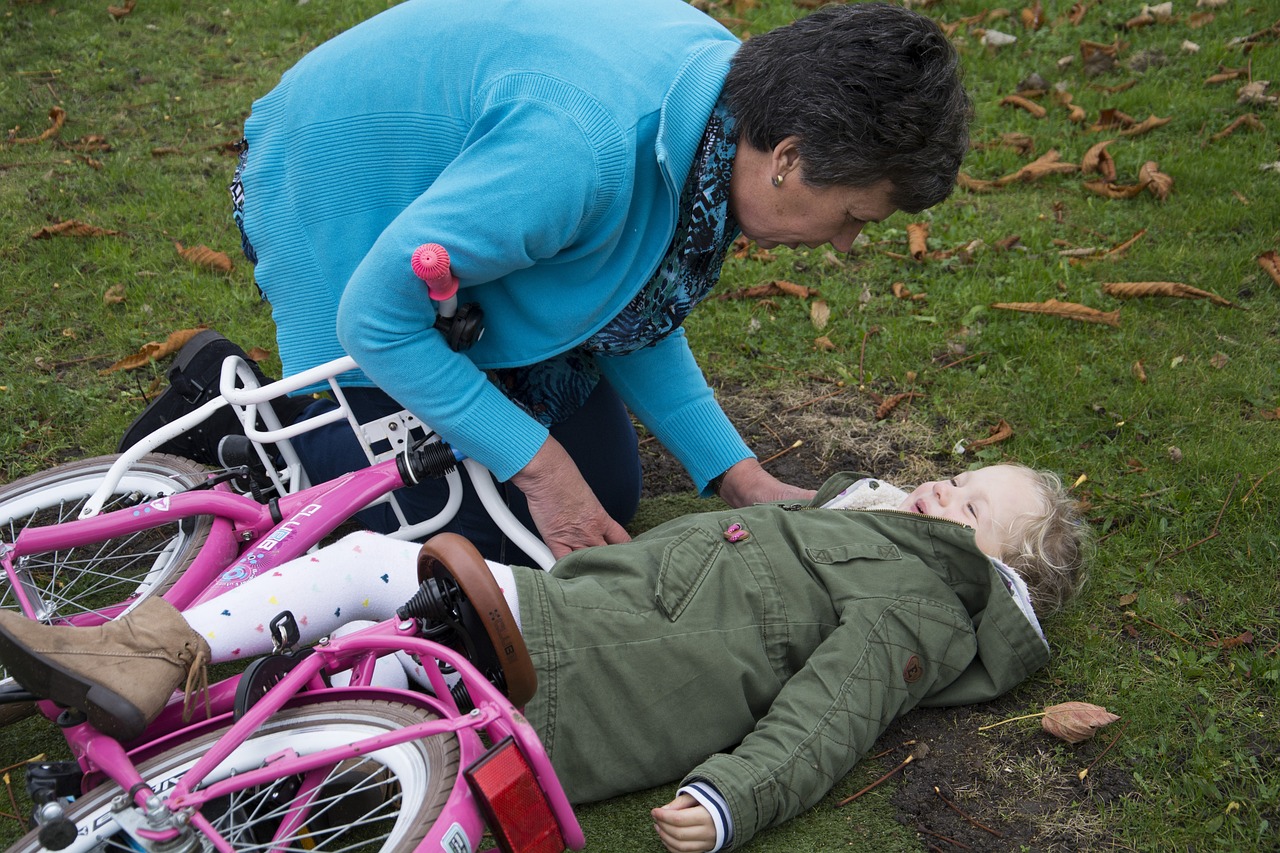
Responding to Cardiac Arrest
Cardiac arrest is one of those situations that can turn a moment into a lifetime of regret if not handled correctly. Imagine you're at a family gathering, and suddenly someone collapses. Your heart races, and panic sets in. But what if I told you that knowing how to respond could mean the difference between life and death? It's crucial to act swiftly and decisively. The first thing to remember is to call for help immediately. Dial emergency services and describe the situation clearly. Time is of the essence!
While you're waiting for professional help to arrive, you can take immediate action. Start with CPR (Cardiopulmonary Resuscitation). This technique is vital because it helps maintain blood flow to the brain and other organs. Here's a quick rundown on how to perform CPR:
- Check for responsiveness: Gently shake the person and shout, “Are you okay?” If they don’t respond, proceed to the next step.
- Call for help: Have someone else call emergency services or do it yourself if you're alone.
- Begin chest compressions: Place your hands, one on top of the other, in the center of the person’s chest. Push hard and fast, at a rate of 100 to 120 compressions per minute.
- Give rescue breaths: If you’re trained, after every 30 compressions, give 2 rescue breaths. Make sure the airway is clear, pinch the nose, and give breaths that make the chest rise.
If you're not trained in rescue breaths, just keep performing chest compressions until help arrives. It’s better to do something than nothing at all! If an Automated External Defibrillator (AED) is available, use it as soon as possible. These devices are designed to be user-friendly and provide step-by-step instructions. Just remember, the sooner you act, the better the chances of survival.
In summary, responding to cardiac arrest is a race against time. By calling for help, performing CPR, and using an AED when available, you can significantly increase the victim's chances of survival. It might seem overwhelming, but just remember: every second counts. You have the power to make a difference, so don’t hesitate to act!
1. What is cardiac arrest?
Cardiac arrest occurs when the heart suddenly stops beating, preventing blood from flowing to the brain and other vital organs. It requires immediate medical attention.
2. How can I tell if someone is in cardiac arrest?
Signs include sudden collapse, unresponsiveness, and abnormal or no breathing. If you suspect cardiac arrest, act quickly.
3. Is CPR difficult to learn?
While it requires practice, CPR is straightforward to learn. Many organizations offer courses, and even watching online tutorials can be helpful.
4. What should I do if I’m alone and witness a cardiac arrest?
Call emergency services immediately and start CPR right away. If you have a phone with you, you can put it on speaker mode while you perform CPR.
5. Can CPR be harmful?
While CPR can cause some injuries, it is far better to risk minor injuries than to do nothing at all. The alternative is death.
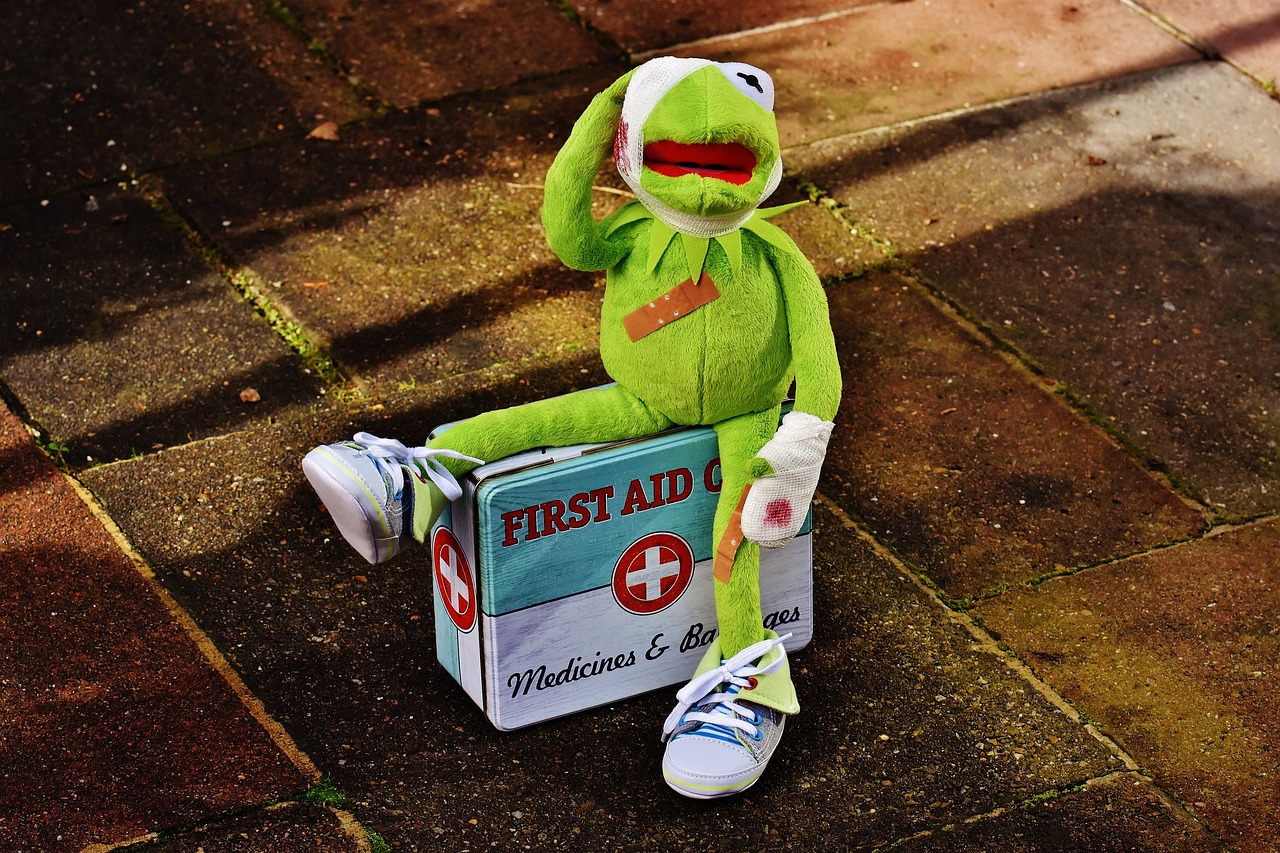
Managing Allergic Reactions
Allergic reactions can be as surprising as a sudden summer storm, striking when you least expect it. They can range from mild irritations to severe, life-threatening conditions known as anaphylaxis. Understanding how to manage these reactions is crucial for ensuring safety, especially for those who are aware of their allergies. The first step in managing an allergic reaction is to recognize the signs and symptoms, which can include hives, swelling, difficulty breathing, and a rapid heartbeat. If you or someone around you starts showing these symptoms, it’s essential to act quickly.
For those who have been diagnosed with severe allergies, carrying an EpiPen or similar auto-injector is vital. This device can deliver a dose of epinephrine, which helps to reverse the symptoms of anaphylaxis. If you suspect someone is having a severe allergic reaction, here’s what you should do:
- Assess the situation: Quickly determine the severity of the reaction. Are they having trouble breathing? Is there swelling in the throat or tongue?
- Administer the EpiPen: If the person has an auto-injector, help them use it immediately. The injection should be administered into the outer thigh, through clothing if necessary.
- Call for help: Dial emergency services right after administering the EpiPen. Even if symptoms improve, medical professionals should evaluate the person, as further treatment may be necessary.
It’s also important to monitor the person’s condition closely. If symptoms persist or worsen after the first dose of epinephrine, a second dose may be required. Always err on the side of caution and keep an eye on their breathing and consciousness levels. While waiting for help to arrive, try to keep the person calm and seated; anxiety can exacerbate symptoms.
In addition to immediate interventions, educating yourself and those around you about potential allergens is equally crucial. Common triggers include certain foods, insect stings, and medications. Keeping a detailed list of known allergens can help in avoiding exposure and managing risks. For example, if someone is allergic to peanuts, ensure that everyone in their circle is aware and vigilant about food choices.
Lastly, consider having a first-aid plan in place. This can include:
| Allergen | Symptoms | Emergency Contact |
|---|---|---|
| Peanuts | Hives, swelling, difficulty breathing | John Doe - 123-456-7890 |
| Bee Stings | Swelling, dizziness, rapid heartbeat | Jane Smith - 987-654-3210 |
By being prepared and knowledgeable, you can effectively manage allergic reactions and potentially save a life. Remember, staying calm and acting swiftly is key to handling these unexpected situations.
Q: What should I do if someone is having a mild allergic reaction?
A: For mild reactions, such as hives or itching, antihistamines can be effective. Monitor the person closely and seek medical advice if symptoms worsen.
Q: How can I prevent allergic reactions?
A: Prevention involves avoiding known allergens, reading food labels carefully, and informing others about your allergies. Carrying an emergency kit can also help.
Q: When should I use an EpiPen?
A: Use an EpiPen when someone is experiencing severe allergic reactions, such as difficulty breathing or swelling of the throat. Always call for emergency help after administering it.
Q: Can allergic reactions develop over time?
A: Yes, it is possible for someone to develop allergies later in life, even to foods or substances they previously consumed without issue. Regular check-ups can help monitor any changes.
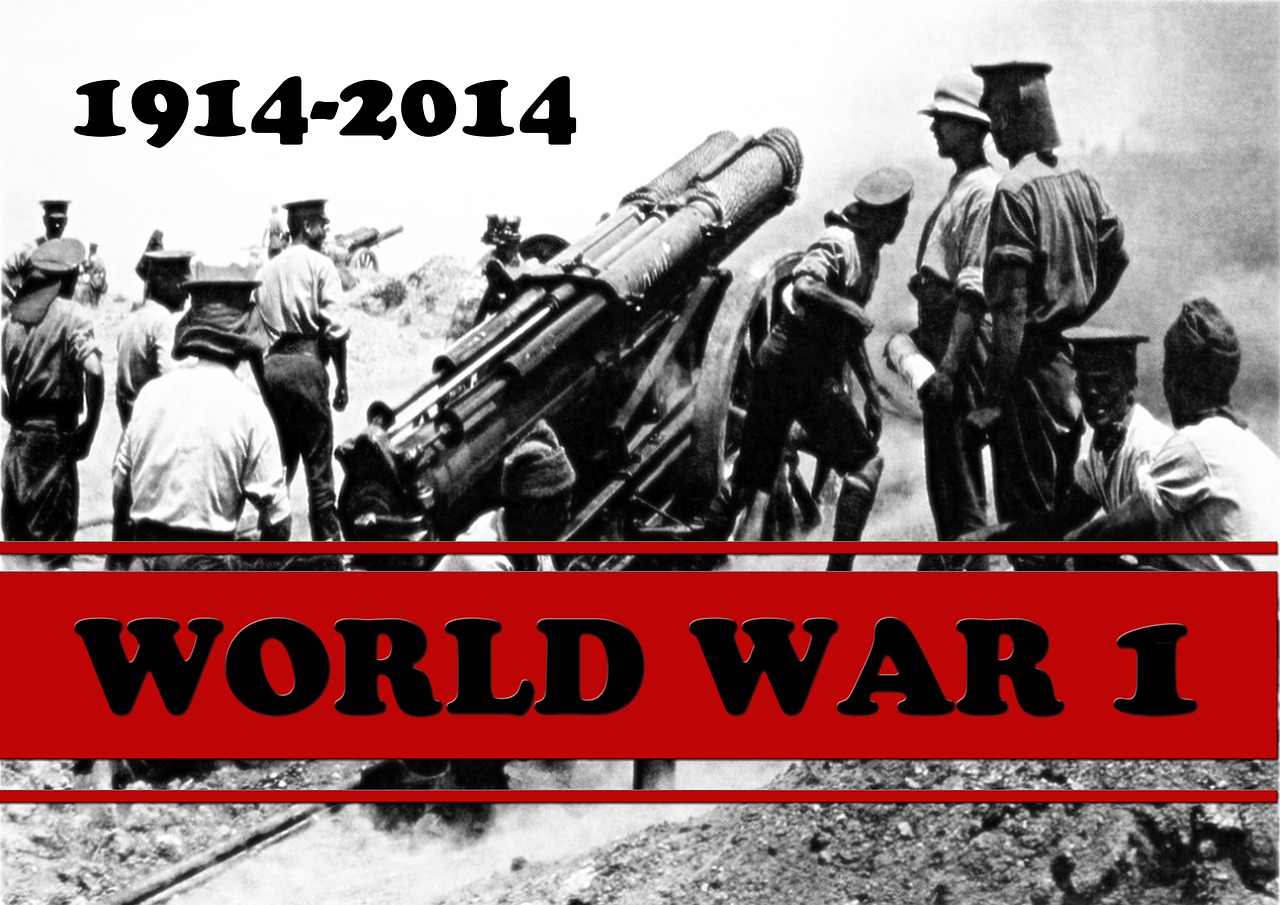
When to Seek Professional Help
Knowing when to seek professional medical assistance can be the difference between life and death in emergency situations. It’s crucial to remain calm and assess the severity of the situation. If you’re unsure, it’s always better to err on the side of caution. After all, when it comes to health, it's better to be safe than sorry! So, how do you determine whether a situation warrants a trip to the hospital or a call for emergency services?
First and foremost, look for life-threatening symptoms. If someone is experiencing difficulty breathing, chest pain, or signs of a stroke (like sudden weakness on one side of the body), you must act quickly. These symptoms can escalate rapidly and require immediate medical intervention. Here are some key indicators that you should watch out for:
- Severe chest pain: This could indicate a heart attack.
- Confusion or inability to speak: This might be a sign of a stroke.
- Severe bleeding: If blood is gushing and doesn’t stop with pressure, it’s time to seek help.
- Loss of consciousness: If someone is unresponsive, call for help immediately.
In addition to these critical signs, there are other situations where professional help is necessary. For instance, if a person has suffered a serious injury, such as a deep cut, broken bone, or severe burn, it’s essential to get them to a medical facility. Even if the injury seems minor, complications can arise, making it vital to have a healthcare professional evaluate the situation.
Moreover, if you encounter a severe allergic reaction, characterized by symptoms like swelling of the face or throat, hives, or difficulty breathing, you should seek immediate medical attention. These reactions can escalate quickly, and having an EpiPen on hand can provide temporary relief, but professional care is crucial for ensuring safety.
Another important factor to consider is the duration of symptoms. If someone has persistent pain, high fever, or any unusual symptoms that last longer than expected, it’s time to consult a healthcare provider. Ignoring these signs can lead to more serious health issues down the line.
Finally, if you’re ever in doubt, don’t hesitate to call your local emergency number. Trained professionals can provide guidance and help you make the right decision. Remember, it’s always better to seek help and find out it’s not serious than to wait too long and face the consequences.
Q: What should I do if I'm unsure whether to seek medical help?
A: If you're unsure, it's best to err on the side of caution. Call your local emergency number for advice.
Q: How can I prepare for emergencies?
A: Create a first-aid kit, familiarize yourself with basic first-aid techniques, and know the signs of common emergencies.
Q: When should I use an EpiPen?
A: Use an EpiPen for severe allergic reactions if you notice symptoms like swelling, difficulty breathing, or hives.
Q: What are the signs of a heart attack?
A: Common signs include chest pain, shortness of breath, nausea, and pain radiating to the arm or jaw.
Q: Can I treat severe injuries at home?
A: Serious injuries, such as deep cuts or fractures, should always be evaluated by a medical professional.
Frequently Asked Questions
- What is the first thing I should do in an emergency?
In an emergency, the first step is to assess the situation. Ensure your safety and the safety of others before taking action. If someone is injured, check for responsiveness and call for help if necessary.
- What should I include in my first-aid kit?
Your first-aid kit should include essential items like adhesive bandages, antiseptic wipes, gauze pads, adhesive tape, scissors, tweezers, and a CPR face shield. Don't forget any personal medications or items specific to your family's needs!
- How do I perform CPR?
To perform CPR, first, call emergency services. Then, place the heel of one hand on the center of the person's chest, interlock your fingers, and push down hard and fast at a rate of 100-120 compressions per minute. Alternate between 30 compressions and 2 rescue breaths if you're trained to do so!
- When should I use an EpiPen?
An EpiPen should be used during a severe allergic reaction, known as anaphylaxis. Signs include difficulty breathing, swelling of the face or throat, and a rapid heartbeat. Inject it into the outer thigh and seek medical help immediately!
- How can I tell if someone is having a heart attack?
Common signs of a heart attack include chest pain or discomfort, shortness of breath, nausea, and pain radiating to the arms, back, or jaw. If you suspect someone is having a heart attack, call 911 right away!
- What should I do if I encounter a choking victim?
If someone is choking and cannot breathe, perform the Heimlich maneuver. Stand behind them, place your arms around their waist, make a fist with one hand, and thrust inward and upward until the object is expelled or they can breathe again.
- When is it necessary to seek professional medical help?
You should seek professional help if there are severe injuries, persistent pain, difficulty breathing, signs of stroke, or if the person is unresponsive. It's always better to be safe and get checked out!



















